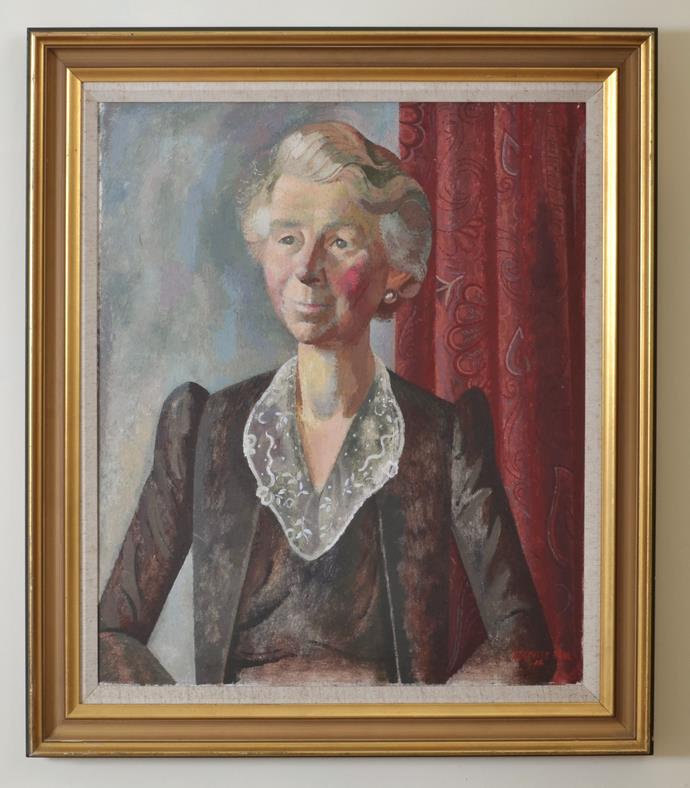Portrait of a Lady Reginald Brill
Despite much searching, we cannot find out who this woman was. Brill drew and painted few women, other than his wife. This is partly because he tended to be preoccupied by painting working people, often in groups: inevitably, most of these were men. But, there is the engaging, In the Kitchen, dated 1961, where the lady of the house - signified by her wedding ring, the two strands of her pearl necklace and rather large brooch? - has her hair wrapped in a scarf and an apron tied tightly round her waist, in defence against splashes from her baking bowl. The woman who may have come in to help with the domestic tasks has her back to us, standing in the scullery. There is also the rather entertaining Waiting in Line, a small watercolour, with three women, all in workaday clothes, standing at a market stall. The single man in the queue is - for some reason - wearing a tailcoat and is definitely being made to feel very much out of place. In both of these pictures, the figures betray the simplification and elongation of form which is so characteristic of Brill’s work. In both, the clothes, postures and gestures tell us a good deal about the social status and relationships between the figures. And, in both, there is the slight exaggeration of expression and manner which lends the composition an affectionate touch of wit and humanity which leavens the otherwise quite assertive social and political commentaries. It is clear, then, that Brill’s paintings embody several layers of meaning; and so, we turn to the Portrait of a Lady.
The figure is lent a degree of pithy assertiveness by Brill’s typical use of simplification of form; she has a long, strong neck and a strong, firmly-modelled, nose. The lady is also lent some authority by the conventional trappings of the picture: she is sitting formally, with the light illuminating the right-hand side of her face and her left benefiting from the warmth in the colour of the hanging curtain behind her. This use of hangings to suggest a context and enhance the tonal values of a portrait is not uncommon; one can find it in 18th century portraits, especially of women, and, of course, in the late 19th century it was a device not infrequently employed by James McNeill Whistler.
We also learn more from the sitter’s clothes. This woman may be elderly – but she is, as well, confident, fashionable and, perhaps, reflecting positively on her life. We know this because the picture is dated 1946; that is, just after the War. This was a time when clothes were hard to come by, when rationing was severe. And yet, this lady is wearing a formal suit, with a subtly mottled texture to the fabric – perhaps a nice tweed, in varied hues. The jacket has stylishly padded shoulders, very striking for the period, and perhaps the last new garment she purchased before the War. And, at her neck, is a piece of lace, ornamented with leaves and tendrils and so delicate and transparent that it must, surely, be hand-made (perhaps Honiton lace, like Queen Victoria’s wedding dress?).
Finally, we can also discern Brill’s appreciation of the humanity of his sitter. She has a wry smile, piercing eyes, a sharp and prominent nose and an assertively upright stance. Each of these elements is slightly heightened – not a caricature, but a touch of affection. All in all, this is a lady of character, style and substance. The picture might reflect a moment of leaving office, of public achievement, of acquisition of status. It is, almost certainly, a commissioned portrait. We enjoy living with this lady. We should love to know who she was!
59.5cms x 49.5cms
74.5cms x 64cms

